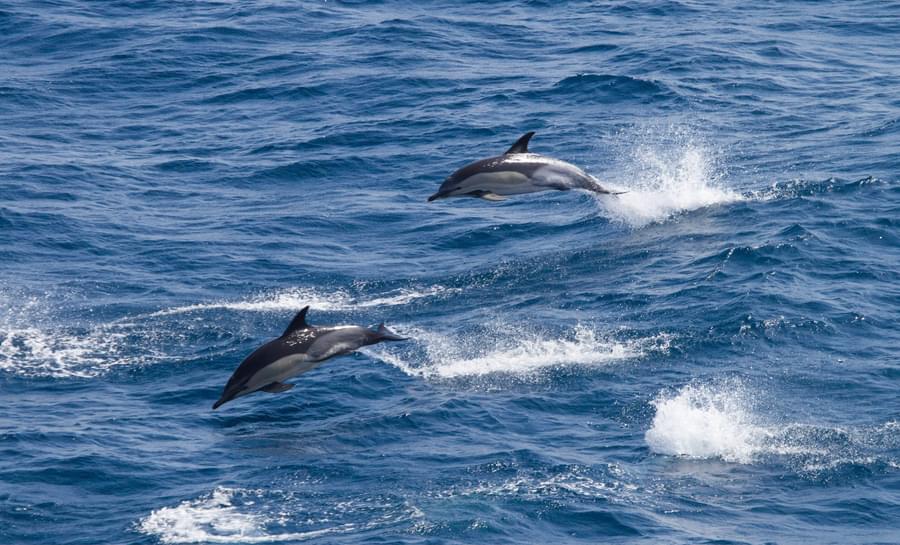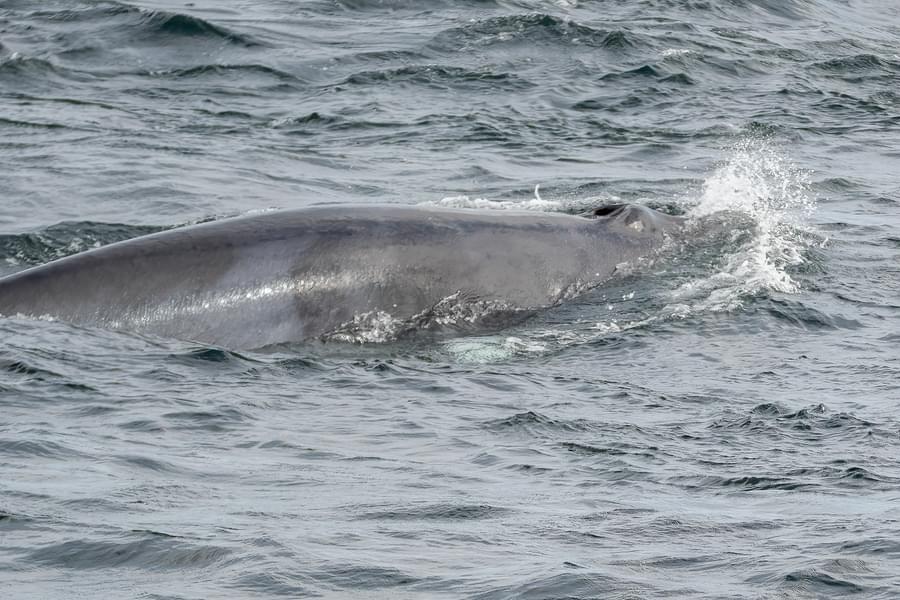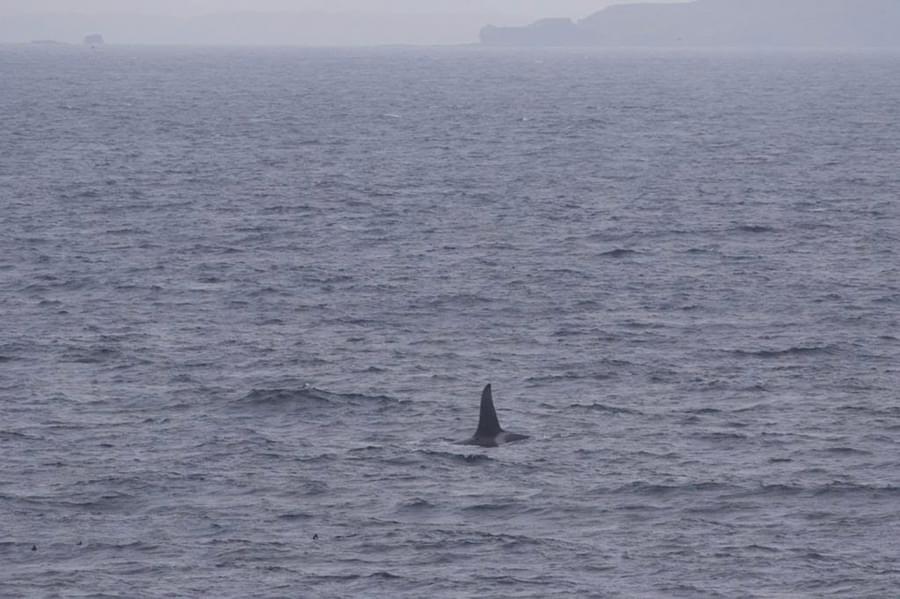With over a quarter of all known whale and dolphin species having been recorded in the Hebrides, more and more people are recognising this area as a hotspot for ‘on-your-doorstep’ cetacean spotting. Having spent several years exploring the islands and surrounding waters both recreationally and professionally, I’ve been lucky enough to have encountered many of these amazing animals first-hand. For this reason, I was excited for the opportunity to join ORCA and Caledonian MacBrayne as an Ocean Conservationist and thought this would be a good opportunity to tell you a little bit about the most common species you might find should you join me on board this season (and I hope some of you will!).
Harbour porpoise (Phocoena phocoena)
Our smallest cetacean, growing to a maximum of around 1.8 metres, these are also the UK's most common. Generally, they will be seen in small groups of 1-4 animals, but at certain points of the season will gather in much larger pods of 50 or more. They spend most of their time hunting small fish using echolocation and are one of the world’s most efficient hunters, catching over 90% of the prey they go for. Being dependent on hearing to hunt, they are particularly susceptible to underwater noise caused by shipping, acoustic deterrent devices and sonar.
.jpg?w=900&q=85&auto=format&fit=clip&dm=1684758998&s=7374f3b910d54dda8509a36a4c4b9ce9)
Common dolphin (Delphinus delphis)
Historically, these were rare summer visitors in the Hebrides, but numbers have risen steadily over the last 20 years. They are now one of the most commonly seen species and can be spotted year-round. They grow up to 2.5 metres and are commonly seen in groups of 10-25 but occasionally form “superpods” where they amass in numbers of 300 plus. The reason for the rise in numbers isn’t completely known, but they are suspected to prefer water with warmer surface temperatures. It is suspected that the rise in the ocean temperature in the sea of the Hebrides over the last two decades has made it an increasingly preferable habitat for them.

Bottlenose dolphin (Tursiops truncatus)
Growing to 4 metres in length, the bottlenose dolphins found in the Hebrides are the largest in the world. Their large size helps them to cope with the cooler water temperatures as they inhabit our waters year-round. They tend to be found hunting along coastal areas in groups of 4-15 but are occasionally spotted on their own. There is a larger population found on the east coast that occasionally finds itself in the western waters.
Risso’s dolphin (Grampus griseus)
Another large species growing to almost 4 metres, these dolphins have a rounded head without the characteristic beak found on many of our other dolphin species. They range from dark to light grey in colour, and older specimens usually have many scars across their body caused by “raking”, a social behaviour where specimens bite onto each other to bond. The species tend to feed on prey, such as squid found in the deeper channels. Hunting in low-light areas like this means they are often found to have ingested ocean plastics.
Minke whale (Balaenoptera acutorostrata)
The smallest of our baleen whales, these amazing animals still reach lengths of up to 10 metres. They are our most populous whale species and are typically found in their largest numbers between April and October but are found in small numbers year-round. The Hebrides are an important habitat for this species, and there is a large marine protected area dedicated to them. Minke whales are highly vulnerable to entanglement as they typically use their manoeuvrability to avoid threats. Unfortunately, when they come into contact with ghost gear and nets in the ocean, they tend to spin and roll, exacerbating the risk.

Humpback whale (Megaptera Novaeangliae)
Growing to lengths of 17 metres, this giant is also one of the most charismatic species found in west coast waters. Their pectoral fins can grow to a third of the length of their body, making them the largest “arms” in the animal kingdom. They hunt using a technique known as “bubble feeding”, where they release air into the water in a large ring, trapping small fish inside, before swimming through with their giant mouths wide open to trap the prey in large numbers.
Killer whale/orca (Orcinus orca)
One of the most well-known whales in the world is not actually a whale. Orca are actually the world’s largest dolphin species growing to 10 metres, and there are several populations that can be seen on Scotland’s west coast. The most well-known of these are John Coe and Aquarius, thought to be the last remaining members of the west coast community. The group has been known for several decades but have never been known to have a calf. In 2016, Lulu, one of the population’s females, was found stranded on the island of Tiree. Necropsy results showed she had ingested large volumes of polychlorinated biphenyls (PCBs), which are suspected to cause infertility.
Although there are never any guarantees you will spot any whales and dolphins, the ferries travelling from Oban to the Outer Hebrides offer a great platform for sightings amongst some truly amazing scenery. Join me on board sailings out of Oban between April and October and discover some of these amazing animals!


.jpg?w=900&h=600&q=85&auto=format&fit=crop&dm=1684758998&s=25d34bd8ca190d3e01a80e74105f39bd)